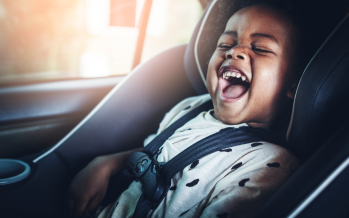Hassle less when driving with children
Children require a lot of care and attention and this can prove to be quite a hassle for any parent/caregiver. Traveling with children is even more tasking thus it’s your responsibility as a parent/caregiver to ensure their safety.
Here are 10 tips for safe driving with children.
1.Activate child safety locks on the car doors and windows
Activating the child safety locks prevents the child from opening the windows or doors while in motion.Children are shielded from harm and many dangerous circumstances as a result. Unintentionally opening a power window can hurt children by pinning their hands, arms, fingers, or even their heads. Therefore, it is always preferable for the driver to have total control over the windows and doors.
2.Use a child seat
First and foremost, make sure that your child is safe and that their body is protected in case of an accident. You will need to buy a child seat because your child might be too short for the seat belt. Make sure you get the suitable kind based on the weight and size of your child.
3.Take potty breaks before the trip
It gets a little trickier for kids, especially babies and toddlers to hold it (If you have ever tried to hold it in traffic for as long as you can, you know the struggle). Make sure to use the restroom before leaving because a fidgety passenger trying to contain themselves could prevent you from arriving at your destination on time.
4.Buckle-up
Seat belts are important, save lives, and they come with every car. Correct seat belt installation is crucial. You should never carry a youngster on your lap or allow them to travel unrestrained since only one person can be safely restrained per seat belt. Since you are a role model for small children, always be sure to use your seat belt properly anytime you are in the car. These good habits for safely fastening your seat belt need to be ingrained at an early age. Before the car moves, the seat belts should be fastened firmly, and they should stay fastened until the engine has been turned off and the car is securely in park.
5.Pack a bag of essentials
Speaking of “accidents,” when traveling with kids, don’t forget to pack your baby bag and other necessities. Snacks, diapers, baby wipes, and other items you might want to bring.
6. The front seats are for adults only!
Don’t put your child in the front seat unless they are already taller than you or large enough to fit in the seat belt. While it is simpler to comfort and wipe noses when your youngster is sitting in front, doing so may cause you to lose focus on the road ahead.
Keep them in a child seat at the rear. buckled up and not fidgeting or causing mischief in the back seat.
7.Bring a partner or spouse along
When working with young ones, having some backup is a wonderful thing. One adult will be in the driver’s seat, while the other will be in the back with the children. This will allow you to maintain your attention on the road and keep your child in check in the back seat.
8.Carry a sick bag just in case
Children may not be accustomed to being moved around in a car, especially if they are first-time passengers. Having said that, if it’s their first time, carry a plastic bag with you. As a parent, you must be prepared for the possibility that your child will become car sick. Make sure the sick bag is nearby and that you only give it to them if they truly need it because plastic can cause suffocation.
9.Provide in car entertainment
We advise you to take the time and put up some videos for them to view from your phone or car monitor for the back passengers. This will help them to focus on something other than the road and other surprises they may encounter. Additionally, think about playing their favorite music while you’re driving. It will give your kids a pleasant environment. In fact, if they can and have a smartphone of their own, why not offer them the AUX cord or allow them to connect their phone over Bluetooth.
But if your child is prone to motion sickness in the car, reconsider.
10.Set a good example
Finally, make sure the ride is safe. Talking to your child and teaching them about the fun of driving and how to do so safely can liven up your vehicle ride. To avoid frightening children while they are in the car, you might also wish to educate them as to what a car is.
Depending on their ages, you could perhaps even educate them on safe driving practices and teach them how to drive, as well as start introducing them to simple reasons as to why protecting vehicles through motor insurance – ( Learn ) & maintenance is important.
While they’re in the car, give them something to look forward to. Give them a positive mental image so they’ll be excited to sit in their seats. This could help you develop healthy driving habits in the future, but it’s also crucial that you are mature when operating a vehicle.

0 Comments